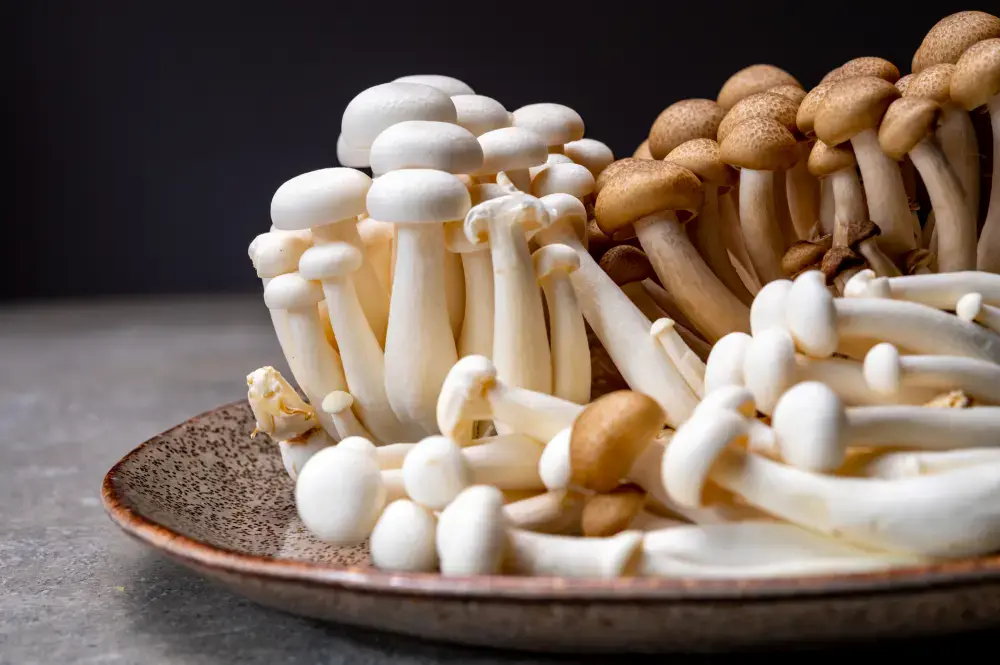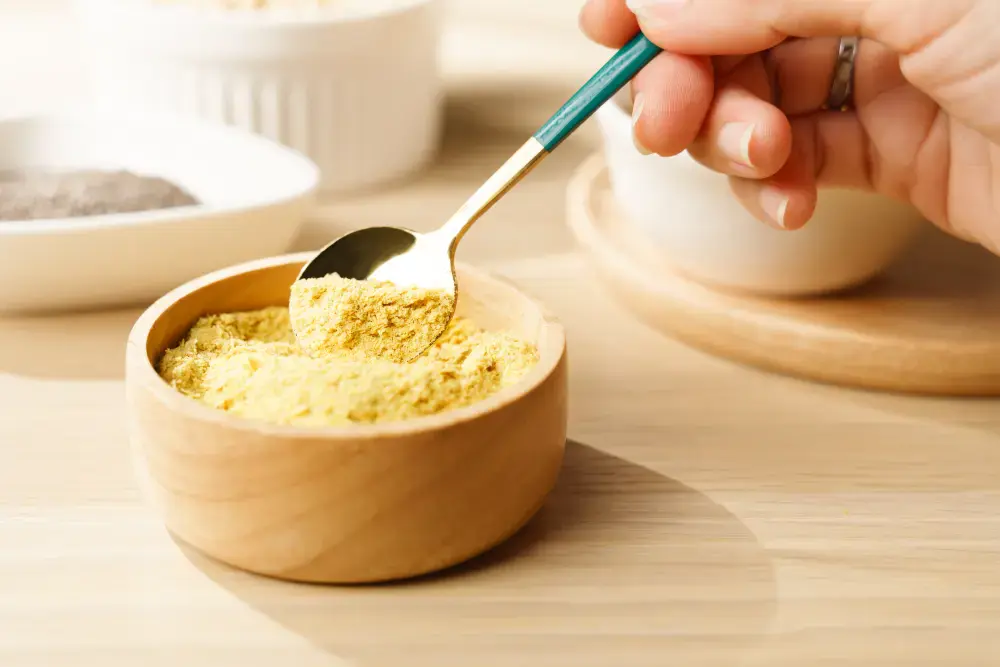
If you think meatless means flavorless, think again. The world of plant-based cuisine has come a long way, and umami — that rich, savory fifth taste — can absolutely thrive without any animal products. Thanks to a diverse range of ingredients, cooking techniques, and a touch of creativity, today’s vegan dishes can pack a powerful punch of savory satisfaction. From creamy mushroom risottos to tofu stir-fries bursting with depth, the possibilities for flavor are endless.
Let’s dive into how to capture that coveted mouthfeel of umami without relying on meat, and explore the best spices, seasonings, and techniques to bring your next recipe to life.
Understanding Umami In Plant-Based Cooking
Umami is one of the five basic tastes alongside sweet, salty, bitter, and sour. Coined by Japanese chemist Kikunae Ikeda, it’s often described as a deep, savory flavor that lingers on the tongue and gives food a satisfying depth. Think parmesan, miso soup, or a perfectly seared steak, which are all rich in umami.
But here’s the exciting part: meatless dishes can hit the same savory highs using carefully selected plant-based ingredients.
In veganism, recreating umami involves embracing foods rich in glutamic acid, fermentation, and slow cooking methods. Umami isn’t about saltiness alone but about layering spices in a way that feels round, complete, and craveable. Whether you’re making a stew, a creamy sauce, or a sizzling stir-fry, umami is what takes a dish from basic to memorable.
The Science Behind Umami
At its core, umami comes from amino acids, specifically glutamic acid and its salts like monosodium glutamate (MSG). These compounds naturally occur in many foods, particularly fermented, aged, or slow-cooked items. When they hit the taste receptors on your tongue, your brain lights up with a savory response that adds complexity and depth to even the simplest dish.
In vegan cooking, boosting umami is about understanding how protein, fermentation, acid, and caramelization work together to engage your palate. Add a bit of vinegar, soy sauce, or a hint of smoke, and suddenly a bland vegetable soup transforms into a bold, crave-worthy meal.
Food scientists take this even further by looking at the chemistry behind umami — from how amino acids interact, to the role of heat, fat, and fermentation in making flavors truly come alive.
The Food Science of Plant-Based Umami
Behind every savory bite is a bit of science. Umami compounds don’t just “happen” — they’re formed, released, and enhanced through chemical reactions that chefs and food scientists can harness.
Glutamates & Nucleotides Working Together

Glutamic acid (found in mushrooms, tomatoes, seaweed, and nutritional yeast) is the backbone of umami. But when paired with nucleotides like inosinate and guanylate, which occur naturally in dried mushrooms, seaweed, or fermented foods, their flavor impact multiplies. That’s why a mushroom–soy sauce combination tastes more powerful than either ingredient alone.
The Maillard Reaction
When proteins and sugars meet high heat, the Maillard reaction kicks in, producing hundreds of new aromatic compounds. This is why roasted cauliflower or grilled eggplant feels so satisfying — the browning isn’t just about color, it’s chemical flavor development.
Fermentation as a Flavor Amplifier
Fermentation breaks down proteins into free amino acids, creating a natural source of glutamic acid and boosting umami. Foods like miso, kimchi, tempeh, and soy sauce are living proof of this principle. They don’t just add saltiness but unlock layers of depth that plain vegetables can’t reach on their own.
Protein & Umami in Vegan Cooking
Plant proteins like soy, pea, and sunflower provide more than structure in a product. They carry amino acids that can be manipulated through cooking, extrusion, or fermentation to intensify umami. That’s why food scientists often design vegan products with both protein content and flavor chemistry in mind.
Acidity, Fat & Balance
Acids (like vinegar or citrus) help highlight umami compounds, while fats act as carriers that let them linger on the palate. In vegan cooking, oils, nut butters, and coconut cream often play the same role as butter or meat fat in traditional recipes, extending flavor and mouthfeel.
Plant-Based Sources of Umami
Let’s talk umami bombs and how plant-based ingredients can bring intense depth of flavor to the table. Here’s your power list:
- Mushrooms: Especially shiitake, portobello, and cremini, these fungi are packed with glutamic acid and give a meaty mouthfeel when roasted, grilled, or sautéed.
- Nutritional Yeast: A vegan’s best friend! Flaky yeast extract has cheesy, nutty notes and can be stirred into anything from pasta to soup for instant flavor.
- Tomatoes: Fresh, roasted, sun-dried, or in the form of tomato paste or tomato sauce, this fruit is loaded with natural umami.
- Soy Sauce, Tamari, and Miso: These soybean-based staples add a salty, fermented dimension to stir-frying, broths, and dressings. Miso (especially red) is a fermented bean paste rich in umami and nutrition.
- Seaweed and Kelp: Kombu, wakame, and nori are all high in glutamic acid. They’re perfect in broths and add a distinct oceanic depth.
- Black Garlic: Sweet, sticky, fermented, and full of umami, this transformed version of regular garlic is a game-changer.
- Fermented Foods: Think kimchi, sauerkraut, tempeh, and fermented bean paste. They hit those deep, savory notes with bonus tang.
- Smoked Ingredients: A touch of liquid smoke, smoked paprika, or smoked salt can instantly round out a flavor profile.
- Vegan Cheese and Aged Nut Cheeses: Made from cashew, walnut, or soy, these often mimic the savory profile of Parmesan or cream.
- Vegetable Broth and Stock: When made from onion, carrot, cabbage, mushroom, garlic, and herbs, broth becomes the base for deep, hearty flavor.
Why Nutritional Yeast And Mushrooms Are Game Changers

When it comes to building umami without meat, few ingredients pull their weight like nutritional yeast and mushrooms. Nutritional yeast, affectionately known as “nooch,” is loaded with natural glutamic acid and adds a rich, cheesy taste to just about anything. Sprinkle it on popcorn, mix it into vegan cheese sauce, or add it to a casserole, and you’ll be amazed at the flavor boost.
Mushrooms, on the other hand, bring their own earthy richness and chew that makes them ideal for recreating the mouthfeel of meat. When grilled, roasted, or even fried, they develop a savory depth that rivals steak. Add them to a veggie burger, slice them into a salad, or sauté them with onion, garlic, and a splash of soy sauce. You’ve got umami for days!
Cooking Techniques To Boost Vegan Umami
It’s not just what you cook, it’s how you cook it. Techniques like caramelization, grilling, and roasting bring out the natural sugars and acids in vegetables, intensifying their umami profile. Slow simmering builds flavor in soups, stews, and sauces while reducing the liquid to concentrate taste.
Don’t sleep on sautéing and stir-frying with high heat, as these methods create the Maillard reaction (aka browning) that amplifies taste and aroma. A few drops of soy sauce, a spoonful of tomato paste, or a splash of wine in the hot pan can deepen the flavor instantly. The right combo of oil, heat, and timing makes the difference between bland and bomb.
Tips To Balance Umami With Other Flavors
While umami is magical, overloading a dish with it can make it taste heavy or one-note. To strike the right balance, pair savory depth with acid, sweetness, or a hint of bitterness. For example, a squeeze of lemon or a splash of balsamic vinegar can brighten a stew or sauce, cutting through the richness while keeping that savory base intact.
Another trick is to play with texture and mouthfeel. A creamy miso-based soup with a crunchy cabbage slaw or a veggie burger topped with pickled onion delivers contrast and keeps every bite interesting. By thinking about your ingredients in terms of perception and layering, you can create a meal that’s complex, craveable, and never overwhelming.
Layering Umami For Maximum Flavor Impact

The real secret to unforgettable umami is building it in layers. Start with a base like onion, garlic, and tomato paste sautéed in olive oil. Then, add a vegetable stock or broth simmered with kombu or shiitake. Next, stir in fermented hits like soy sauce, miso, or kimchi, and finish with a topper like nutritional yeast, black pepper, or toasted sesame oil.
Layering works because each ingredient brings its own amino acid profile, so they amplify one another. In a risotto, for example, you might cook the rice in broth, stir in mushrooms, finish with vegan cheese, and drizzle with truffle oil. That’s a multi-level umami experience that will make your taste receptors sing.
See How We Bring Flavor Ideas to Life
At NuSpice, we create bold, custom spice blends that help our clients deliver unforgettable vegan flavor experiences. Our formulations are designed to hit every taste note, from enhancing a sweet potato and zucchini medley to giving tofu dishes a savory kick with cumin, ginger, and turmeric. We work with fermented flavors and smoke, among other bold spices, to carefully craft seasoning profiles. Our goal is to help your plant-based products stand out in any market.
If you’re developing a new vegan snack, sauce, or ready-to-eat meal, our spice experts tailor each blend to your unique product vision, giving you a signature flavor profile that’s both on-trend and timeless.